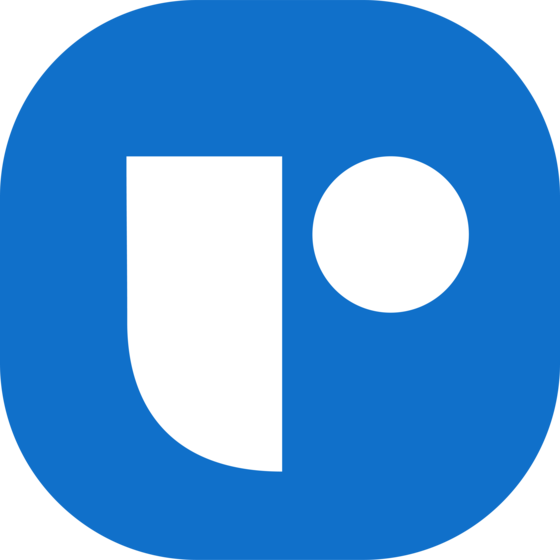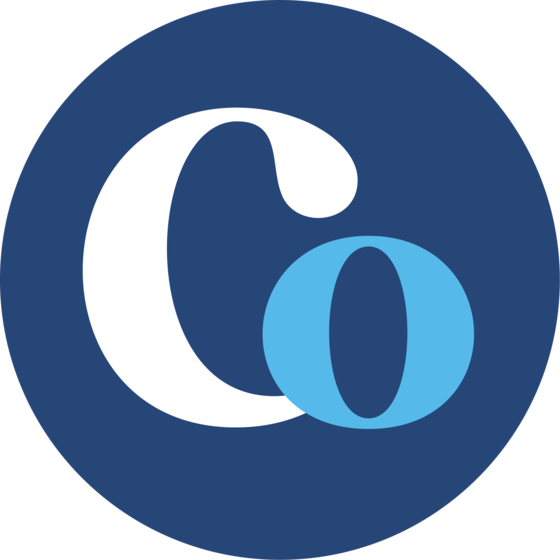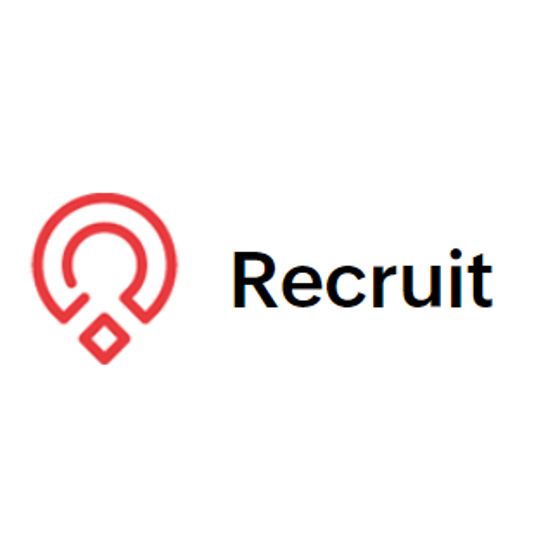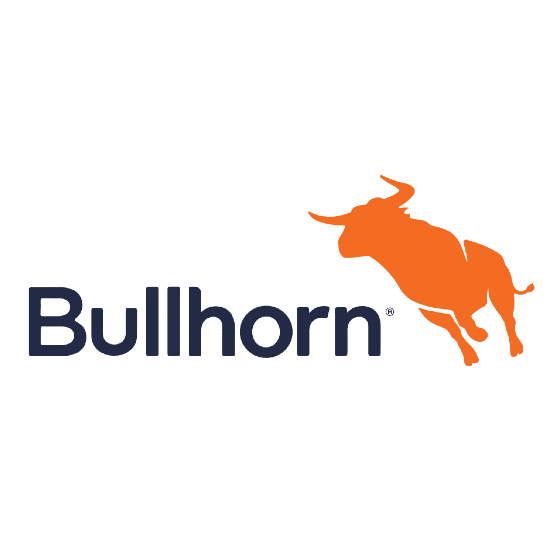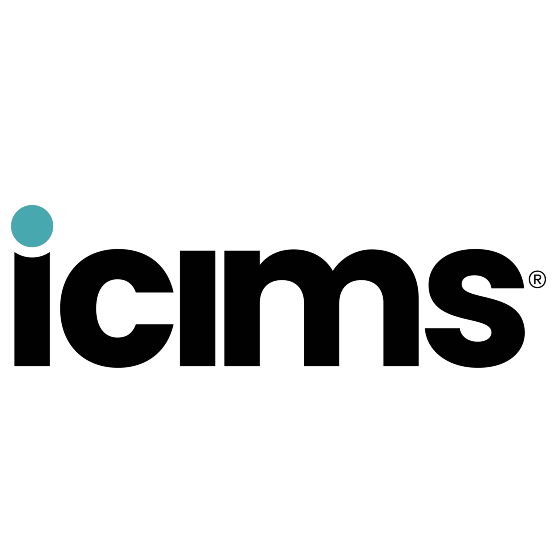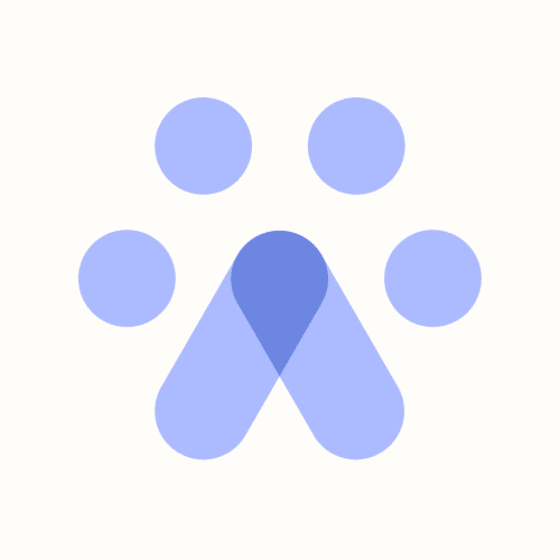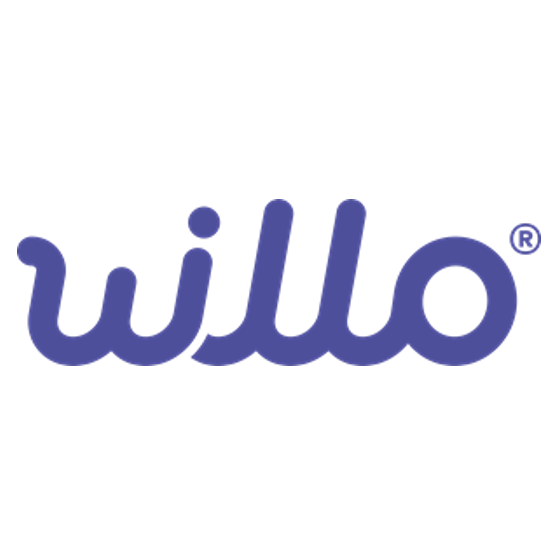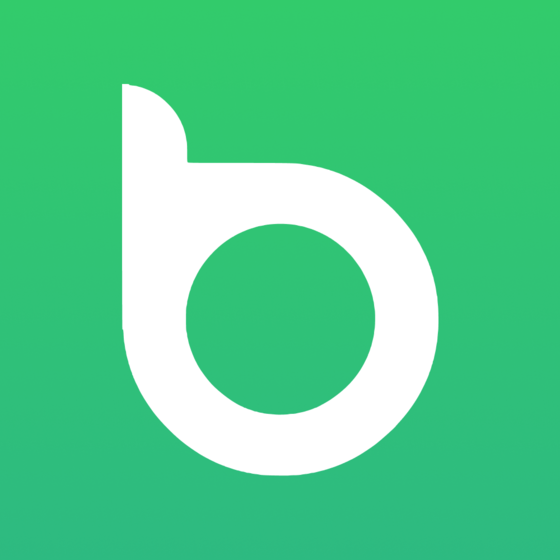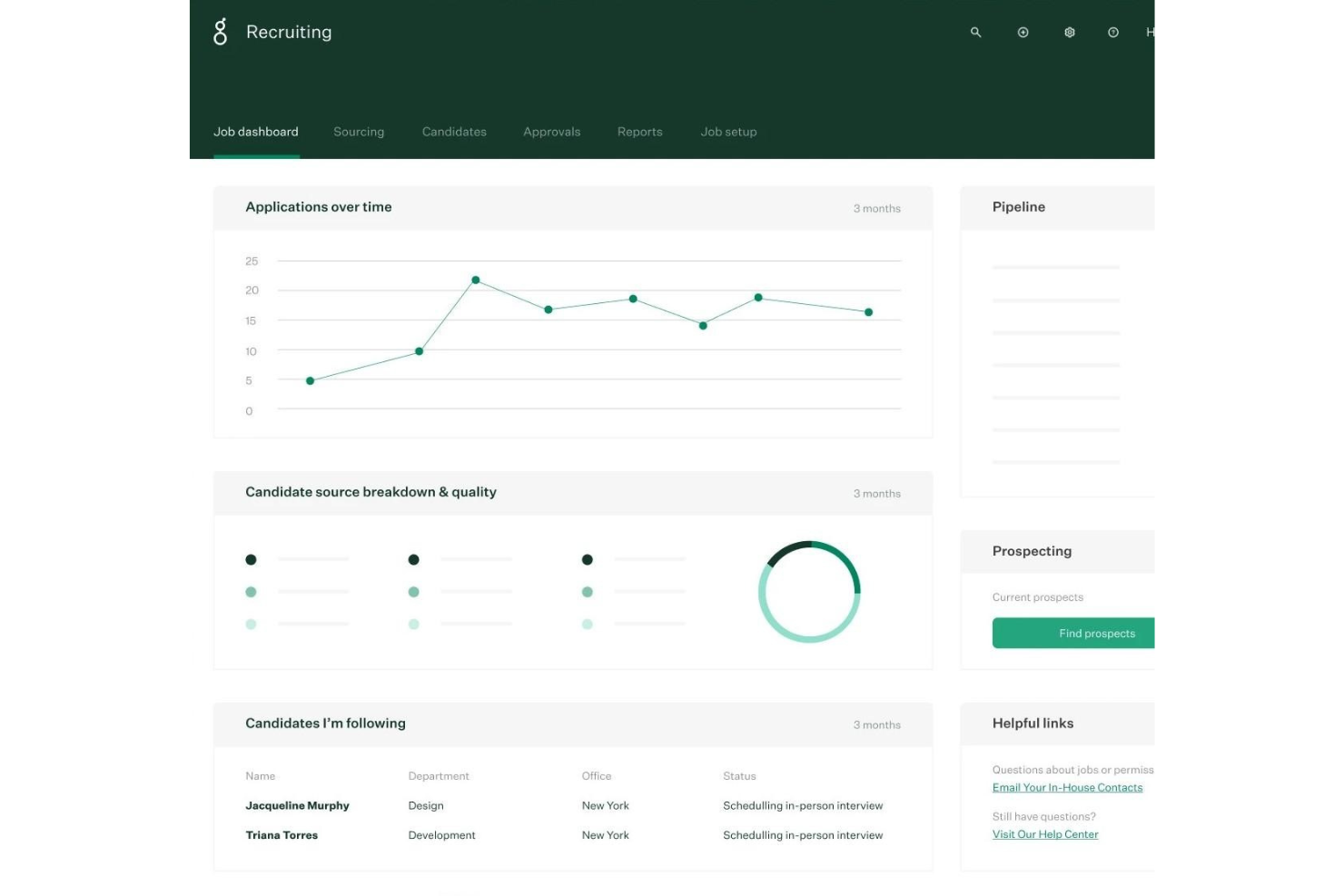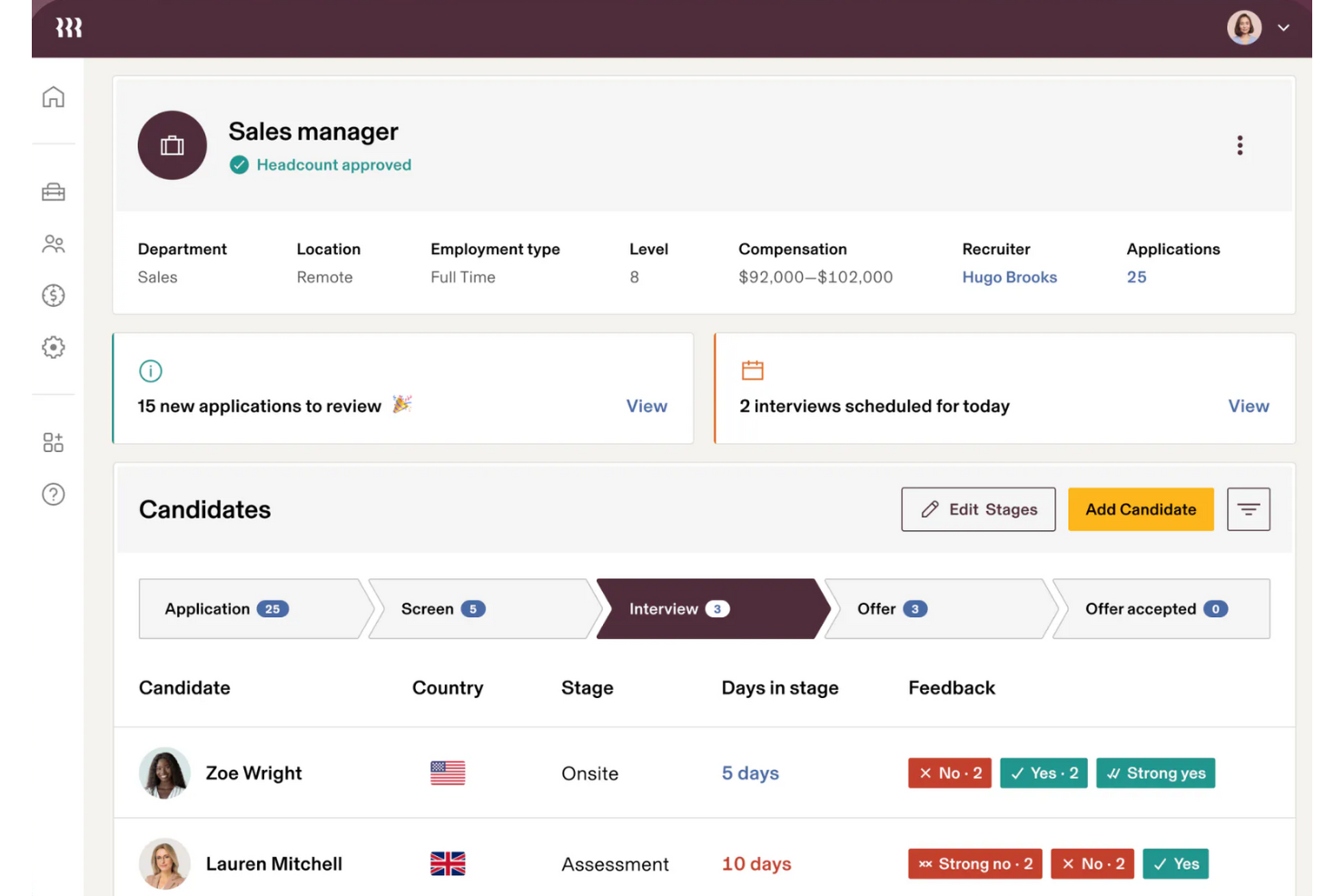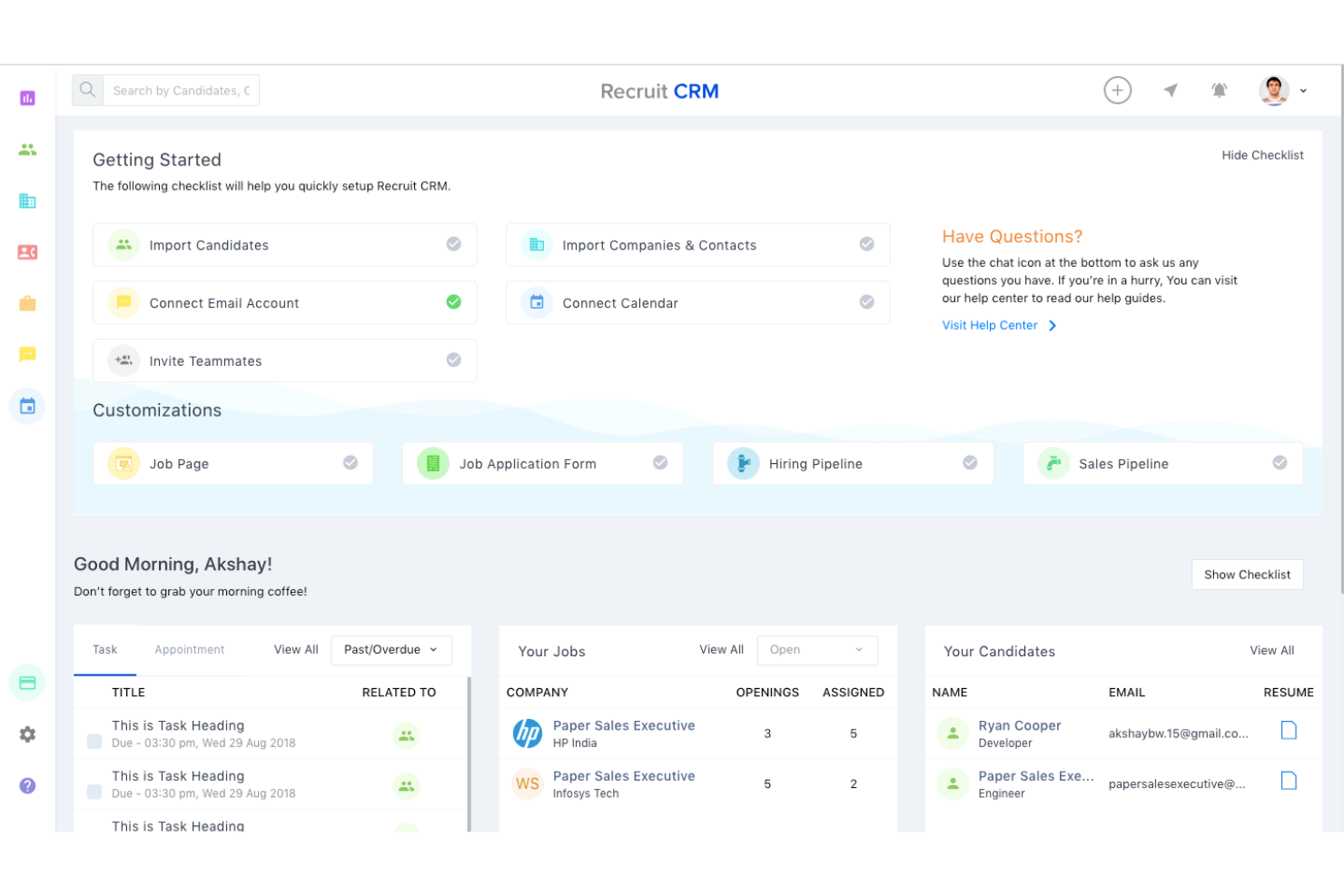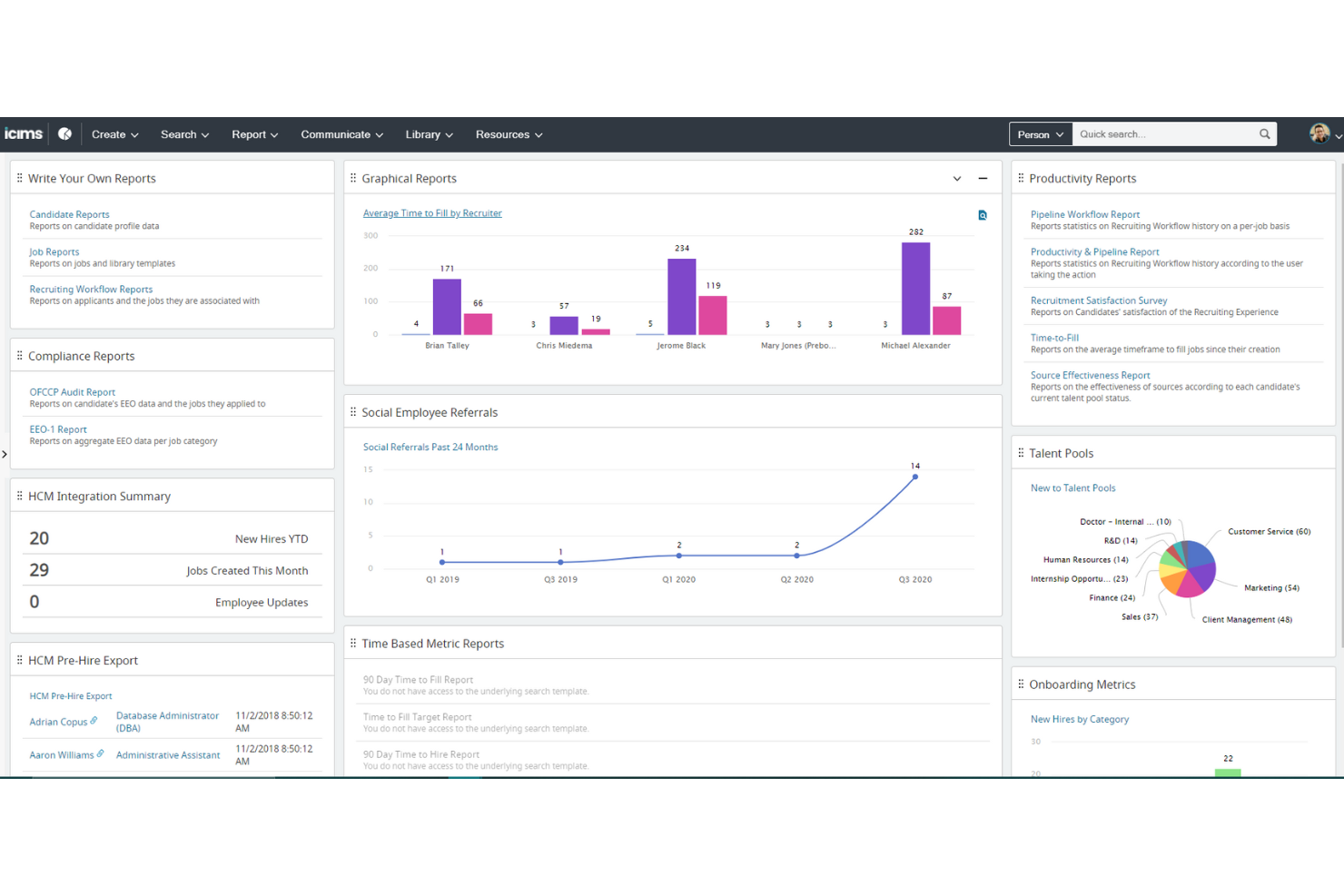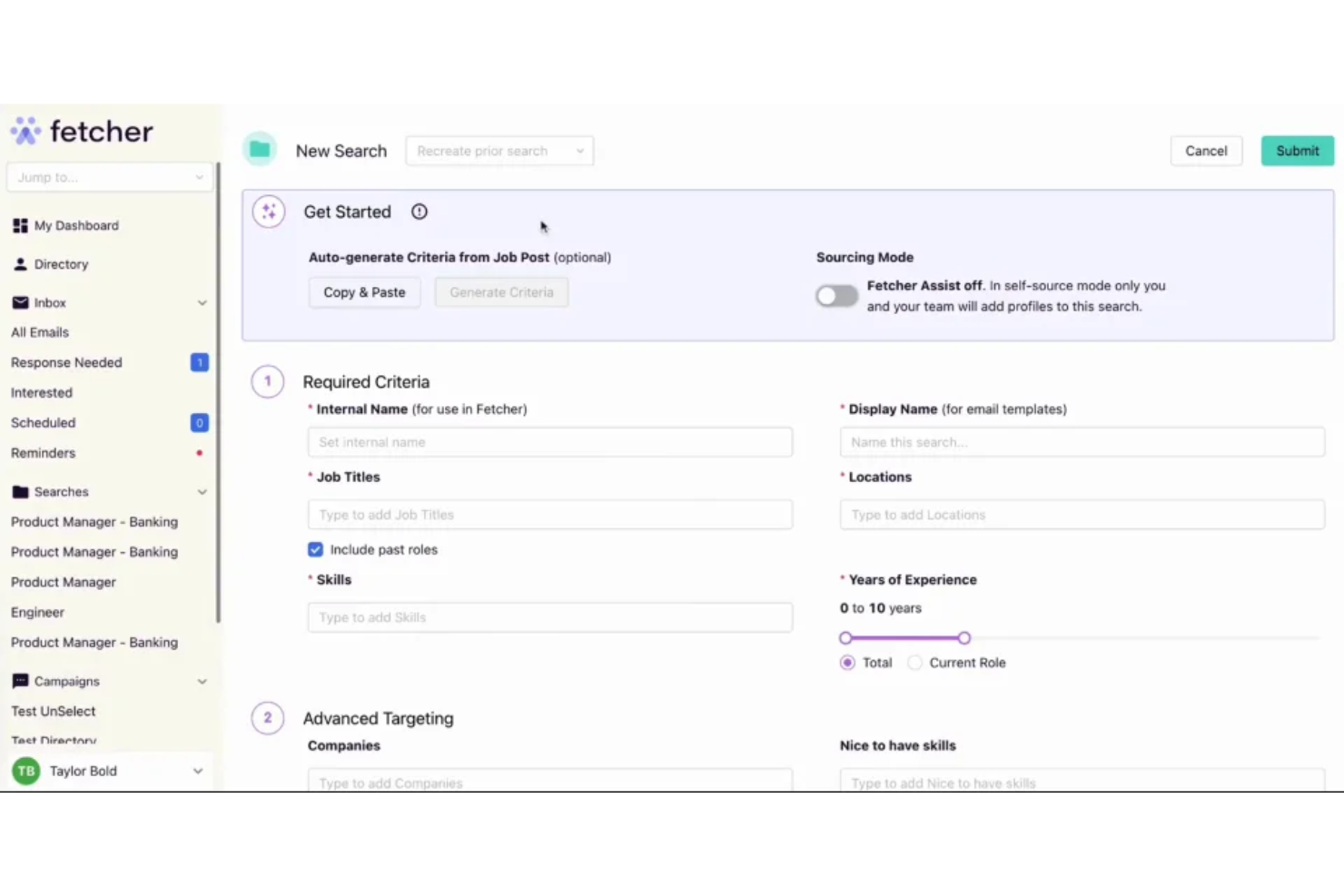10 Best Cloud Recruitment Software Shortlist
Here's my pick of the 10 best software from the 20 tools reviewed.
Get free help from our HR software advisors to find your match.
Effective recruitment is based on speed and efficiency, which is where cloud recruitment software can provide a real advantage.
These solutions are designed to help you source candidates and manage them through your recruitment process, balancing the appropriate levels of automation vs personalization (recruitment is about people, after all).
But, with so many solutions available, figuring out which is right for you can be time consuming.
Here, I'll help you make your choice easier by sharing my insights on the best cloud recruitment software based on my personal experience using these systems.
Why Trust Our Software Reviews
We've been testing and reviewing HR software since 2019. As HR professionals ourselves, we know how critical and difficult it is to make the right decision when selecting software.
We invest in deep research to help our audience make better software purchasing decisions. We've tested more than 2,000 tools for different HR use cases and written over 1,000 comprehensive software reviews. Learn how we stay transparent, and take a look at our software review methodology.
Best Cloud Recruitment Software: Pricing Comparison Chart
This comparison chart summarizes pricing details for my top cloud recruitment software selections to help you find the best software that works for your budget and business needs.
| Tool | Best For | Trial Info | Price | ||
|---|---|---|---|---|---|
| 1 | Best for rapid hiring | 14-day free trial | From $15/user/month | Website | |
| 2 | Best for wide candidate reach | Free demo available | Pricing upon request | Website | |
| 3 | Best for tracking the recruitment pipeline | Free demo available | From $8/user/month (billed annually) | Website | |
| 4 | Best for recruitment agencies | Free trial available | From $84/user/month | Website | |
| 5 | Best for recruitment automation | Free demo available | Pricing upon request | Website | |
| 6 | Best for remote hiring | 15-day free trial + free plan available | From $25/user/month (billed annually) | Website | |
| 7 | Best for a central recruitment hub | Not available | Pricing upon request | Website | |
| 8 | Best for its opportunity marketplace | Free demo available | Pricing upon request | Website | |
| 9 | Best for sourcing high-quality candidates | Free demo available | From $549/user/month | Website | |
| 10 | Best for hiring hourly workers | Free demo available | Pricing upon request | Website |
-

Rippling
Visit WebsiteThis is an aggregated rating for this tool including ratings from Crozdesk users and ratings from other sites.4.8 -

Willo
Visit WebsiteThis is an aggregated rating for this tool including ratings from Crozdesk users and ratings from other sites.4.8 -

Boon
Visit WebsiteThis is an aggregated rating for this tool including ratings from Crozdesk users and ratings from other sites.4.7
Best Cloud Recruitment Software Reviews
Here’s a brief description of each cloud recruitment software that showcases each system’s best use case, their noteworthy features, and some pros & cons. I’ve also included screenshots to give you a snapshot of their user interface too.
Manatal is an AI-powered recruitment software tool that aims to help human resources teams, recruiting firms, and headhunters source and hire candidates faster.
Why I picked Manatal: Handy Kanban boards give you an overview of your recruitment process in a single view and you can use the drag-and-drop interface to customize your recruitment pipeline based on your internal process. The posting featuring makes it easy to share your job openings on local, global, and specialized job sites and manage all your sponsored job campaigns from a single platform.
When the applications come flooding in, the system's artificial intelligence engine simplifies the screening process by suggesting the best candidates based on your job descriptions and you can score candidates’ profiles based on job requirements, facilitating better screening. Profiles can also be enriched with LinkedIn and other social media data for improved matching recommendations.
Manatal Standout Features and Integrations
Standout features include the AI candidate matching tool that recommends both the most suitable jobs for your candidates and the most suitable candidates for your jobs, the job description generator to help you write more effective job descriptions, and the intuitive applicant tracking tool.
Integrations include Codility, Gmail, Google Calendar, Indeed, LinkedIn, Mailchimp, Meta for Business, Microsoft 365, Microsoft Outlook, and Microsoft Power BI.
Pros and cons
Pros:
- LinkedIn sourcing
- AI recommendations
- Customizable templates
Cons:
- No way to customize the home page
- Filtering could be improved
Greenhouse helps you reach, classify, and nurture talent so you can build a robust candidate pipeline, delivering exactly the right candidate for each available position.
Why I picked Greenhouse: Greenhouse delivers massive candidate reach, allowing you to post on over 1,000 job boards, including both niche sites and major job marketplaces. The software recommends the best places to post, based on historical and industry performance.
You can easily capture prospect’s contact information and automate personalized outreach at scale. Greenhouse empowers stakeholders with granular permissions and keeps everyone in the loop with alerts, tasks, and notifications.
You can kickstart new jobs by configuring fields so they capture all the necessary information. Then collaborate directly within Greenhouse with @mentions, shared application reviews, job offers, and approvals.
Greenhouse Standout Features and Integrations
Features include applicant tracking, structured hiring, team collaboration, automated task management, multichannel sourcing, candidate experience, core reports, and a mobile app.
Integrations include Broadbean, Canditech, Cord, Docusign, Dropbox, FlexJobs, Google Meet, Indeed, Microsoft Teams, Paradox, and Seek.
Pros and cons
Pros:
- Great visibility for hiring managers
- Excellent candidate experience
- Timely emails
Cons:
- Limited reporting options
- Complicated user interface
Rippling is a versatile talent management and recruitment platform that syncs data across multiple applications and helps make recruitment the team exercise it should be.
Why I picked Rippling: I selected Rippling due to its exceptional pipeline tracking capabilities. The platform's centralized dashboard gives users a clear, real-time view of every candidate's status across different stages of the recruitment process. This visibility allows recruiting teams (recruiters, hiring managers, etc) to easily monitor progress, identify bottlenecks, and make informed decisions. Additionally, Rippling's automated workflows and reminders ensure that no step in the hiring process is overlooked.
Another reason Rippling stands out is its powerful candidate sourcing and tracking features. The software integrates with various job boards and social media platforms, enabling recruiters to reach a broader talent pool.
Rippling Standout Features and Integrations
Standout features include personalised dashboards helping each team member to easily manage their pipeline and data-rich reporting tools that combine insights from different applications to help make more effective hiring decisions.
Integrations include LinkedIn, Indeed, Glassdoor, Greenhouse, Lever, Zoom, Slack, Google Workspace, Microsoft Office 365, and DocuSign.
Pros and cons
Pros:
- Ability to build repeatable recruitment processes
- Automated onboarding features
- Personalized dashboards for different team members
Cons:
- Custom candidate surveys only available on pro plan
- Limited language support
Recruit CRM aims to offer a comprehensive solution for fast moving recruitment teams dealing with large volumes of candidates.
Why I picked Recruit CRM: Being aimed at recruitment teams handling applicants and clients, it's a pretty advanced solution offering tons of automations and integrations including the ability to post roles across 2000+ jobs boards worldwide. It's also highly customizable and therefore easy to tailor to meet your org's needs.
Recruit CRM Standout Features and Integrations
Standout features include the ability to integrate with over 1000 different applications for increased productivity, a Chrome sourcing extension that makes it easy to add new records to your database, a deals pipeline to keep an eye on business opportunities and an invoicing function to make invoicing clients easy.
Integrations are available to a wide range of applications through Zapier.
Pros and cons
Pros:
- Useful Chrome extension
- Database can be tailored
- CRM/ATS integration
Cons:
- Can be slow
- No chatbot
New Product Updates from Recruit CRM
New Features For Agency Recruiters
Recruit CRM has launched new features for agency recruiters, including trend analysis dashboards, customizable analytics, and no-code workflows, to predict revenue dips and maintain financial stability. For more details, visit Recruit CRM Product Updates.
ClearCompany is a talent management and recruitment platform designed to help you bring in the best talent and ensure their continued success.
Why I picked ClearCompany: The ATS function features many time-saving automations such interview scheduling workflows and the ability to expedite the candidate communication via automated emails or pre-built text recruiting campaigns. When combined, these features can help hiring teams accelerate their hiring process and identify top talent faster.
You can also tap into their network of over 800 million professionals to kickstart the sourcing process.
ClearCompany Standout Features and Integrations
Standout features include slick interview scheduling and candidate communication tools, integrated data analysis and reporting for better recruitment planning, and their candidate sourcing engine.
Integrations are available with numerous skill assessment platforms, background-checking tools, payroll systems, and benefits providers. Key systems to note include ADP, BambooHR, Ceridian, Checkr, eSkill, Office 365, Okta, OneLogin, Paychex, Paylocity, UKG Pro, and others.
Pros and cons
Pros:
- Has mobile-friendly features including text-to-apply and bulk texting
- Easy to connect hired candidates into onboarding workflows
- Supports background checks in 180 countries
Cons:
- User interface is a little bit dated
- Video interviewing capabilities are not native (though available through integrations)
Zoho Recruit offers an ATS and CRM in one recruitment platform that’s designed to be scalable and customizable.
Why I picked Zoho Recruit: Zoho makes it easy to hone in on each stage of the recruitment funnel and optimize your employer branding and recruitment marketing efforts, delivering relevant information to candidates to encourage quality applications.
Zoho Recruit is also designed to help teams manage the hiring process on a fully-remote basis and tap into global talent pools.
Zoho Recruit Standout Features and Integrations
Standout Features Their custom chatbot, Zia, helps candidates find matching jobs based on skillsets, as well as pre-screen them, register them to your portal, and track applications. Their mobile app makes it easy to 'recruit from anywhere', aided by video interviewing and candidate screening tools.
Integrations include Advanced Recruit Analytics, Google Calendar, Google Docs, Zoho CRM, Zoho People, and Zoho Writer.
Pros and cons
Pros:
- Excellent search capabilities
- Great resume tracking tool
- Advanced customization options
Cons:
- Steep learning curve
- No dark mode
Bullhorn aims to offer a single source of truth for busy staffing agencies and even acts as the central hub for the wider tech stack.
Why I picked Bullhorn: Bullhorn understands how busy recruitment teams are but also the need to balance efficiency (read, automation) with the human touch. As such, they're careful to implement automation with caution and use it to improve the experience for teams and candidates.
They're also generous with knowledge, providing playbooks to help organizations engage with candidates and differentiate their offering.
Bullhorn Standout Features and Integrations
Standout features include their AI tool, built on a sea of recruitment data, to help source and screen candidates and craft relevant communications, as well as advanced analytics features such as real-time dashboards and custom reporting.
Integrations include Broadbean, Candidately, Checkr, CloudCall, Dice, eSkill, Indeed, LinkedIn, Monster, and Referoo.
Pros and cons
Pros:
- Advanced workflow options
- Clean interface
- Large partner marketplace
Cons:
- Downtime issues
- Occasional latency issues
iCIMS offers a talent management solution designed to help organizations recruit and retain talent in one platform.
Why I picked iCIMS: Their talent cloud platform makes it easy to showcase the employer brand and match internal and external candidates with roles. The application process is easy and the system helps provide effective communication thereafter through automated messaging.
From an organizational perspective, the tool helps to qualify candidates and provide timely team feedback for fast and effective decision making.
iCIMS Standout Features and Integrations
Standout features include candidate experience management tools, that combine behavior-based marketing automation with AI insights to qualify candidates and assess their levels of engagement, as well as a digital assistant that supports candidates' applications in 20+ languages and across multiple formats.
Integrations include Appcast, Broadbean, Digi-Me, JobTarget, LinkedIn, Rakuna, Recruitology, TalentCircles, ViziRecruiter, and Worqdrive.
Pros and cons
Pros:
- Tracks candidates at every step
- All-in-one solution
- Bulk printing capabilities
Cons:
- Navigation is not intuitive
- No auto progression
Fetcher is a candidate sourcing tool that uses AI to unearth talent from the market and build your own talent pool.
Why I picked Fetcher: Fetcher stands out with its AI-driven candidate sourcing capabilities. Unlike traditional recruitment tools, Fetcher leverages advanced algorithms to identify and engage with active and passive candidates. The platform's AI automates the search process, scouring vast databases to find high-quality candidates that match specific job requirements.
Fetcher also helps source high-quality candidates through its verified contact information and automated email sequences to nurture potential candidates. Recruiters can also set specific diversity goals, ensuring a more inclusive hiring process.
Fetcher Standout Features and Integrations
Standout features include its super easy and customizable search function, intuitive candidate database, and automated lead nurturing.
Integrations include Ashby, Greenhouse, Lever, Workable, Workday, BambooHR, Freshteam, Gmail, Google Calendar, HR Cloud, Jazz HR, Lano, Sage, SAP, Slack, SmartRecruiters, Smashfly, and TalentLyft.
Pros and cons
Pros:
- Uses AI to source qualified candidates
- Allows users to create and manage outreach campaigns
- Facilitates smooth communication with candidates
Cons:
- Can be expensive for teams with limited resources
- The user flow can feel complex
TalentReef's cloud-based recruitment software is purpose-built for location-based, high-volume recruiting.
Why I picked TalentReef: I included TalentReef in this list because of their unique focus on sourcing candidates to fill hourly positions. This makes their software particularly well-suited for sourcing talent for businesses in the service industry, such as restaurants, retail stores, and other hourly employers that frequently hire new staff in bulk.
TalentReef Standout Features and Integrations
Standout features include their conversational AI chatbot, a text-to-apply feature, two-way texting abilities, and social recruiting tools. Recruiters can also save a lot of time by using their campaign communication features to create templated email and SMS communications for candidate interactions, allowing them to stay in touch with high volumes of candidates at scale.
Another plus worth highlighting is their interview scheduling automation. By allowing candidates to pick a time that works for them, you'll reduce the likelihood of no-shows or last-minute cancellations, and eliminate the need for back-and-forth phone tag to find a time that works.
Integrations are available with payroll systems, candidate assessment tools, background check providers, and learning management systems, though individual platforms are not specified.
Pros and cons
Pros:
- Automatically ranks candidates
- Includes mobile-friendly features
- Purpose built for staffing hourly positions
Cons:
- Pricing details are not transparent
- No free trial available
Other Cloud Recruitment Software
Here are a few more worthwhile options that didn’t make the best cloud recruitment software list:
- Jobvite
For robust employer branding
- Journeyfront
For data-driven decisions
- Trakstar Hire
For web-based applicant tracking
- Deel
For global agency-sourced hiring
- Pinpoint
For centralized candidate information
- Tracker
For an ATS with CRM
- Unnanu Hire
For AI-powered candidate scoring
- Freshteam
Cloud recruitment software for resume screening
- Workable Recruiting
Cloud recruitment software for ISO-certified data security
- SmartRecruiters
Cloud recruitment software for sustainable hiring
Related HR Software Reviews
If you still haven't found what you're looking for here, check out these other related tools that we've tested and evaluated:
- HR Software
- Payroll Software
- Recruiting Software
- Employer of Record Services
- Applicant Tracking Systems
- Workforce Management Software
Selection Criteria for Cloud Recruitment Software
Selecting the best cloud-based recruiting software for this list required a thorough understanding of the specific needs and pain points that recruiters typically face. My approach to creating this list is based on my personal experience and extensive research into how these software systems address the common needs, pain points, and goals of recruiters in real, day-to-day scenarios.
Here's a summary of the selection criteria I used to create this list:
Core Cloud Recruitment Software Functionalities (25% of total score): To be considered for inclusion in this list, each solution had to fulfill these common use cases first:
- Posting jobs to multiple job boards
- Tracking and managing candidate applications
- Scheduling and conducting interviews
- Communicating with candidates and hiring teams
- Generating reports and analytics on recruitment metrics
Additional Standout Features (25% of total score): To help me find the best software out of numerous available options, I also kept a keen eye out for unique features, including the following:
- AI-driven candidate matching and recommendations
- Advanced analytics and predictive hiring trends
- Customizable workflow automation
- Integration with social media platforms for candidate sourcing
- Integration with payroll software especially for recruiting agencies
- Real-time collaboration and feedback tools for hiring teams
Usability (10% of total score): To evaluate the usability of each system, I considered the following:
- Intuitive user interface with drag-and-drop functionality
- Customizable dashboards for personalized views
- Easy navigation and quick access to frequently used features
- Responsive design for mobile and tablet use
- Role-based access controls that are easy to configure
Onboarding (10% of total score): To get a sense of each software provider's customer onboarding process, I considered the following factors:
- Availability of comprehensive training videos and interactive product tours
- Pre-built templates for faster setup
- Chatbots and in-app guidance for real-time assistance
- Webinars and live training sessions for users
- Efficient data migration tools for seamless transition from previous systems
Customer Support (10% of total score): To evaluate the level of customer support each vendor offered, I considered the following:
- 24/7 customer support availability through multiple channels (live chat, email, and phone)
- Access to a knowledge base or self-service help center to improve troubleshooting
- Dedicated account managers for personalized assistance
- Quick response times and resolution rates
- Community forums for user interaction and support
Value for Price (10% of total score): To gauge the value of each software, I considered the following factors:
- Free trials or demos to evaluate the tool before purchase
- Transparent pricing with clear breakdowns of costs
- No hidden fees for additional features or users
- Flexible subscription plans and scalable pricing options
- Discounts for long-term commitments or bulk purchases
Customer Reviews (10% of total score): Evaluating customer reviews is the final element of my selection process, which helps me understand how well a product performs in the hands of real users. Here are the factors I considered:
- Consistently high ratings for ease of use, functionality, and support
- Positive feedback on specific features and user experiences
- Regular updates and improvements based on user feedback
- Testimonials highlighting successful implementations and ROI
- Recognition or awards from industry analysts and other software publications
Using this assessment framework helped me identify the software that goes beyond basic requirements to offer additional value through unique features, intuitive usability, smooth onboarding, effective support, and overall value for price.
Trends in Cloud Recruitment Software for 2025
Staying informed of the latest trends in recruitment software features can help you incorporate new technological advancements into your recruitment strategy to further optimize your processes, attract top talent, and gain a competitive edge.
Here are several trends impacting cloud recruitment software currently:
AI-Driven Candidate Screening
Perhaps the most time-consuming and monotonous part of recruitment, candidate resume screening is still the essential first step to finding the talent you want. Artificial Intelligence (AI) is revolutionizing the way resumes are screened, making the process more efficient and less biased.
AI algorithms can analyze vast amounts of data to identify the most suitable candidates, saving time and reducing human error. Ultimately, AI screening can reduce time-to-hire and help improve the quality of hires by analyzing data more comprehensively than humanly possible. This is particularly important in tech, healthcare, and finance industries where the demand for specialized skills is high.
Predictive Analytics for Employee Retention
Predictive analytics tackles the challenge of retaining employees by helping to predict turnover rates using the following strategies:
- Data Analysis: Uses historical employee data, as well as employee demographics, performance metrics, and engagement levels, to identify patterns indicating potential turnover.
- Risk Identification: Pattern recognition and data analysis also helps HR professionals spot at-risk employees, enabling early intervention.
Adopting predictive analytics can help HR teams understand when and how to implement proactive retention measures, which can significantly reduce turnover and its associated costs.
Enhanced Remote Interviewing Capabilities
With hybrid and remote working models becoming the norm, cloud recruitment software is increasingly incorporating advanced tools for remote interviewing. This includes high-definition video conferencing, interactive assessments, and virtual reality environments. This trend helps HR managers conduct efficient and effective interviews, regardless of geographical boundaries.
Integration with Social Media and Professional Networks
Nowadays, the best talent might not be found on a traditional job board. Instead, social media is becoming the place to find diverse, high-level talent. As such, ensuring that your cloud recruitment software integrates with social media can provide several benefits to improve your recruitment process, such as:
- Wider Talent Access: Enables HR professionals to tap into extensive networks on platforms like LinkedIn and Twitter.
- Passive Candidate Engagement: Facilitates connection with candidates who aren't actively job hunting but are potential fits.
- Efficient Sourcing: Streamlines the process of finding and reaching out to suitable candidates, especially in dynamic sectors like tech and finance.
Incorporating this integration into recruitment strategy can vastly improve the scope and efficiency of talent acquisition and, when combined with remote interviewing capabilities, can help you find talent in places that were previously inaccessible.
What is Cloud Recruitment Software?
Cloud recruitment software is a web-based application that allows companies to manage all phases of their recruitment process online, from posting jobs to sorting applicants, comparing their skills, scheduling interviews, completing reference checks, and more. Typically, they're hosted on a remote server and accessed through a web browser through desktop or mobile devices.
Cloud recruiting software helps recruiting teams work together more efficiently and effectively through a combination of features such as resume parsing, skill comparisons, workflow automation, and collaboration tools. These features work together to support better data-driven decision-making, simultaneously improving your hiring outcomes and offering a better candidate experience.
Costs & Pricing for Cloud Recruitment Software
Cloud recruitment software offers a range of different plans and pricing options that cater to various needs, from small businesses just starting out to large enterprises with complex recruitment processes. Each plan typically offers a different set of features and capabilities, with pricing that scales based on the functionality and number of users.
Plan Comparison Table for Cloud Recruitment Software
| Plan | Average Price | Summary | Common Features Included |
|---|---|---|---|
| Free | $0 | Basic functionality for small teams or startups | Job posting, basic applicant tracking, resume parsing, limited candidate communication, and reporting |
| Basic | $50 per month | Entry-level paid plan for small to medium businesses | All Free plan features plus enhanced candidate communication, interview scheduling, and basic analytics |
| Standard | $150 per month | Comprehensive plan for growing businesses | All Basic plan features plus advanced analytics, workflow automation, custom branding, and integrations |
| Professional | $300 per month | Advanced features for larger teams | All Standard plan features plus AI-driven candidate matching, advanced reporting, and priority support |
| Enterprise | Custom pricing | Tailored solutions for large organizations | All Professional plan features plus a dedicated account manager, custom integrations, and enterprise-grade security |
When selecting a plan, consider the specific needs of your business and the features that will provide the most value. This will help you choose a solution that fits both your recruitment budget and your organization's needs.
Frequently Asked Questions
People often ask for advice on choosing the best cloud recruitment software. Here are some answers to the most common questions:
What main features are included in cloud recruitment software?
Cloud recruitment software typically includes features such as applicant tracking, resume parsing, job posting, job distribution, and automated candidate communication. Other common functions include job interview scheduling tools, data analytics, recruitment metrics, and reporting.
How can I improve my recruitment process?
To improve your recruitment process, you can streamline workflows with cloud recruitment software and establish clear hiring criteria. You can also leverage data analytics to make data-driven hiring decisions, improve your recruitment marketing, and prioritize your candidate experience to ensure positive company interactions.
Get the Right People On the Bus
That’s all for this article, folks! But before you go, be sure to sign up for our People Managing People newsletter. That way, we can keep you up-to-date with the latest insights from recruitment experts.
In his book Good to Great, Jim Collins says that great companies “get the right people on the bus, and in the right seats.” Cloud recruitment software has the power to pack your corporate bus with exactly the right people, in precisely the right roles.
So once you pick the optimal tool from this list, you’ll be set to drive your business to new heights of success. Enjoy the ride!





